
Kathi Borgmann and Josh Beck are living the dream of many a North American birder. They packed up in June of 2013 and headed south from San Diego with the southern tip of South America as their destination. Like so many trips this one is more about the journey than the destination which brings us to why they have a guest post (hopefully the first of several) on 10,000 Birds. En route they will be “birding in nearly every country in mainland North and South America,” and, as they say on their excellent blog, “Our journey is about collecting valuable data on bird species, their status and distribution, current conservation issues, and more along the way. We hope that our journey will provide important information about many Neotropical bird species as well as inform conservation.”
Their first contribution to 10,000 Birds is here. Their second is here. Check them out and then come back to read about the guan!
The Horned Guan is not just one of, if not THE standout birds of Mexico and Guatemala, but of the entire world. It is an ancient species, restricted to a tiny range, difficult to access, difficult to find, but once found incredibly unique and striking.
While the Horned Guan is in Cracidae and is thought to have diverged, evolutionary, from the curassows some 20-40 million years ago and to be more closely related to the modern curassows than the modern guans. Today it is placed in its own monotypic genus, Oreophasis, and loosely grouped with the present day curassows and chachalacas.
Horned Guan (Click for a bigger version.)
Endemic to mountaintop cloud forest patches in Chiapas and Guatemala, perhaps occurring at a maximum of six locations in Mexico and a handful more in Guatemala, the Horned Guan is restricted to a tiny, fragmented range. Population size is very difficult to estimate but might be a few thousand at best. It was already a relict species living in isolated populations long before man brought deforestation, coffee plantations, wood extraction, hunting, trapping and other risks to its world, further decreasing its range and population and further fragmenting populations. Horned Guans have disappeared from some of their former locations, while the majority of the remaining habitat, whether protected or not, is subject to logging, agricultural conversion, hunting, climate change, and other pressures. It is believed that the population in El Triunfo, Chiapas is stable, but throughout its range the population is still declining and the Horned Guan is an endangered species.
We had the great fortune to meet Dr. Fernando Gonzalez-Garcia, essentially Mr. Horned Guan, who has worked in El Triunfo and studied the Horned Guan for the past 25 years. Most of what is known of the Horned Guan’s natural history is due to his research and observations. Fernando and his colleague, Dr. Jose-Luis Rangel of El Colegio de la Frontera Sur (ECOSUR), along with a group of graduate students, conduct a monthly monitoring program focused on the Horned Guan, with attention also given to the Highland Guan, Resplendent Quetzal, Fulvous Owl, Jaguar, Puma, and Tapir in the core zone of El Triunfo. By fortune of our staying two months in San Cristóbal de las Casas, Chiapas, we were able to get to know Jose-Luis and meet Fernando when he visited San Cristóbal for CECAM (Congreso para el Estudio y Conservación de las Aves en México). Thus was born a plan to volunteer for the monitoring effort and be able to visit the Biosphere Reserve of El Triunfo.
El Triunfo is a bit of logistical fun to get to, the trailhead being fairly in the middle of Chiapas and quite a ways from everything, including paved roads. It took two days to gather the group, buy supplies, get to and hike up to El Triunfo. We gathered part of the group in San Cristóbal, traveled to Tuxtla Gutierrez, meet the rest of the team, bought provisions for the week at a handful of different stores, repacked the vehicles and drove to Angel Albino Corzo (also known as Jaltenango). We had a friendly dinner at a local restaurant and stayed in the local inexpensive hotel. The following morning we had a bit of a wait for the CONANP office to open, then there were a few hours of paperwork and getting everything sorted and prepared before the team was loaded into the back of an open-air truck for a fairly bumpy two-hour ride on dirt roads to the small village of Santa Rita, where the trail to El Triunfo begins. A full day and a few hours later, we were finally on the trail up to El Triunfo, but Kathi and I, probably by virtue of being gullible volunteers, got picked to scoot up the hill ahead of most of the group along with two of the graduate students so we could arrive well before dark and deploy various recording devices in the forest. We didn’t really miss a lot of birding, as it was raining heavily, but we had a wet, sweaty and hurried hike up the hill and some slippery excursions into the forest to put out the recorders. But at last we were in El Triunfo!
Wine-throated Hummingbird
The following morning we set out for monitoring, Kathi accompanying one group and I another. We both had fantastic experiences, both learned a good bit and were able to help a bit with the monitoring, and Kathi had the great fortune to see a Horned Guan spectacularly well, though I was not so lucky – not so much as an auditory detection, though I did get treated to Wine-throated Hummingbirds displaying within just a few meters among many other great highlights. The following two days of monitoring were cancelled due to heavy rain and we spent almost the entire time confined indoors, anxious to get out and me feeling like my chance for a Horned Guan was slipping away! Kathi and I had planned to stay a bit longer than the rest of the team, if possible, and it ended up being very fortuitous as most of the team needed to descend on the 4th day but we were able to stay an extra 3 days with Ismael Valdez, 30-year veteran ranger and the person who knows El Triunfo better than anyone, to complete the monitoring.
calling Horned Guan (Click to make it bigger.)
The day that most of the team descended looked like it might be wet again but Kathi and I decided to give a try so we rose well before dawn and started hiking the Costa trail down towards the pacific slope of El Triunfo, hoping for better weather as we descended. The plan worked, weather wise, and we avoided the miserable weather up top. We ended up having one of if not the most magical days of our lives, coming across an Ocelot in the trail pre-dawn, seeing a Horned Guan magnificently silhouetted against the sky at first light and then later having a calling male just above us on the trail allowing terrific photos, having the great luck to photograph and make recordings of four species of hummingbirds in one day (Green-throated Mountain-Gem, Wine-throated Hummingbird, Sparkling-tailed Hummingbird and Rufous Sabrewing), encountering the endemic Azure-rumped (Cabanis’s) Tanager, and at last light being treated to a trio of Fulvous Owls calling around us before finding one perched in the open just above the trail, putting a tremendous cap on an already amazing day. The following two days we caught a break in the weather and were able to complete the monitoring with Ismael, making us quite happy to have been able to contribute to the effort and also giving us good views and photo opportunities of a few more Horned Guans as well as finally getting better than a fleeting glimpse at the more common but never easy to see Highland Guan. As well, despite the rain, we found many more amazing cloud forest species during our stay including such lookers as Resplendent Quetzal, Blue-crowned Chlorophonia, Spotted Nightingale-Thrush, Emerald Toucanet, Unicolored Jay, and Blue-throated Motmot, as well as harder to observe species such as Barred Parakeet, Tawny-throated Foliage-Gleaner, White-faced Quail-Dove, Singing Quail, Scaly-throated Foliage-Gleaner and Ruddy Foliage-Gleaner.
Emerald Toucanet
For us, after 6 months and nearly 800 species in Mexico, the Horned Guan is certainly the most outstanding bird we’ve seen. The effort put into it, the rain, the mud, the hiking, all just add to our great memory of this spectacular bird. You can find more photos and information about visiting El Triunfo and birding there on our blog, Birds of Passage


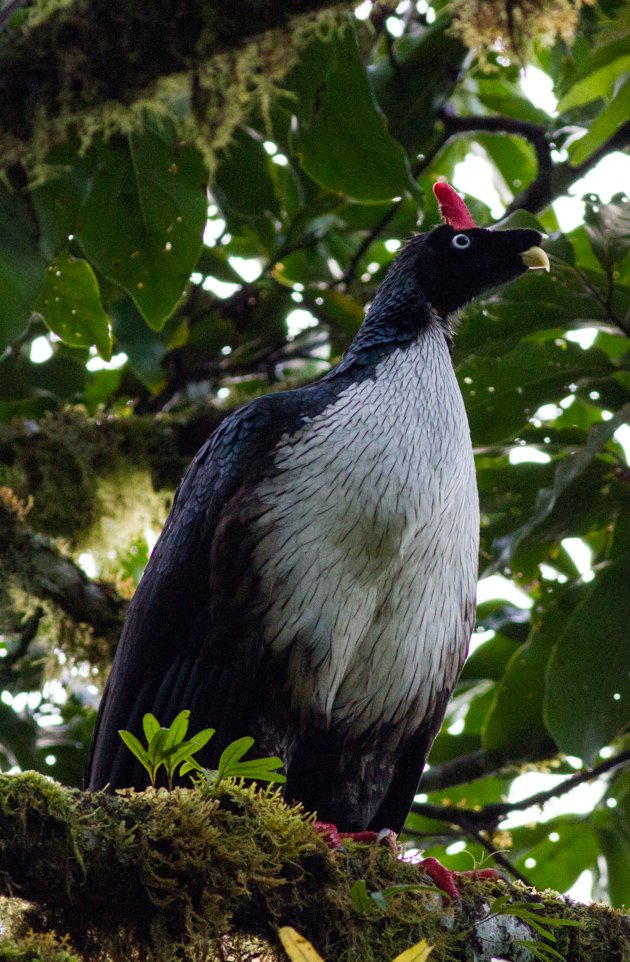
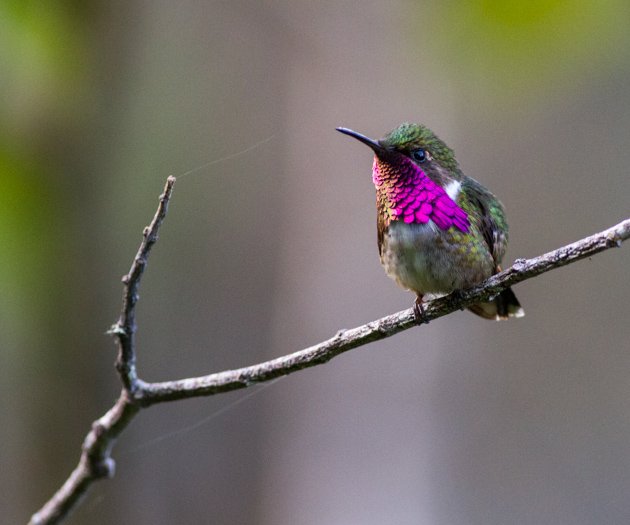
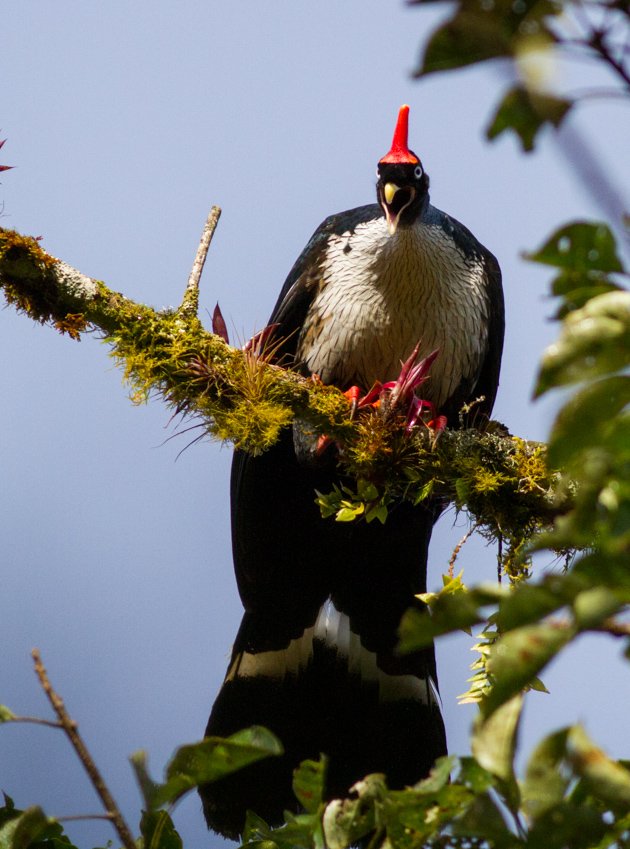
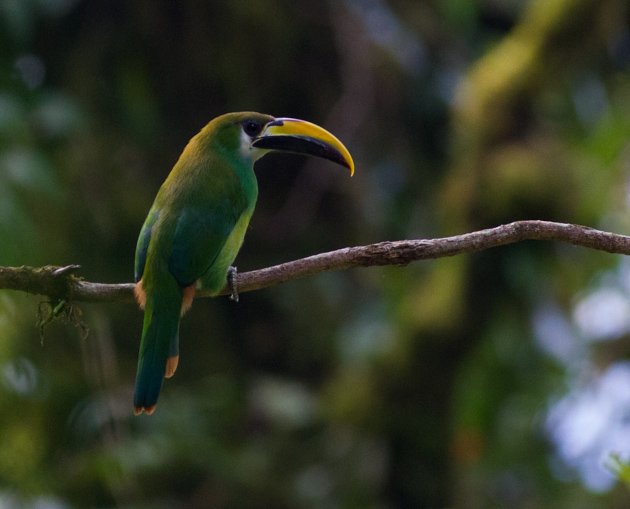








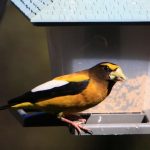
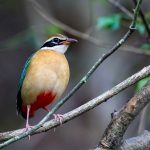
Thanks for a great post! What a fabulous bird, and a great adventure. ¡Buen viaje!